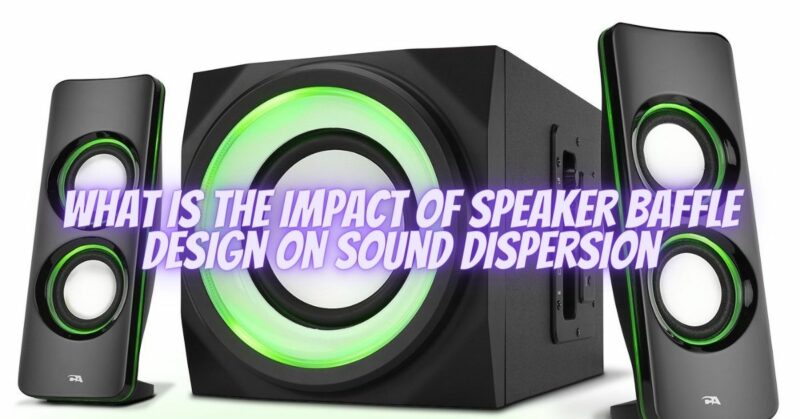The speaker baffle design plays a crucial role in determining the sound dispersion characteristics of a speaker system. The baffle refers to the front panel of the speaker enclosure that holds the speaker drivers. Its design, size, shape, and material selection significantly influence how sound is radiated and dispersed into the listening space. In this article, we will explore the impact of speaker baffle design on sound dispersion, helping you understand how different baffle configurations affect the way sound is projected and distributed.
- Baffle Width and Height:
The width and height of the speaker baffle have a direct impact on sound dispersion:
a. Narrow Baffles: Narrow baffle designs result in more focused sound dispersion, with sound energy being projected in a more direct and concentrated manner. This can enhance the imaging and center channel localization, particularly for the higher frequencies. However, narrow baffles can result in limited dispersion and a narrower sweet spot for optimal listening.
b. Wide Baffles: Wide baffle designs facilitate broader sound dispersion, allowing sound energy to spread out more extensively into the listening space. This wider dispersion can create a larger sweet spot, providing a more enveloping listening experience for multiple listeners. However, wide baffles may lead to reduced imaging precision and potentially increased diffraction effects.
- Baffle Shape and Contours:
The shape and contours of the speaker baffle influence sound dispersion and can impact the frequency response in the listening environment:
a. Rectangular Baffles: Rectangular baffle shapes are commonly used due to their simplicity and ease of construction. They generally provide consistent dispersion patterns and even frequency response across a wide range of angles. However, rectangular baffles may result in diffraction effects at the edges, causing interference patterns and potential phase cancellations.
b. Curved Baffles: Curved or contoured baffles, such as those with convex or concave shapes, are designed to reduce diffraction effects and minimize interference patterns. These designs can enhance sound dispersion and reduce colorations caused by edge diffraction. Curved baffles can provide smoother off-axis response and wider sweet spots, resulting in improved sound quality and imaging.
c. Angled Baffles: Angled baffles, commonly found in studio monitors or speakers designed for near-field listening, can help improve directivity control and reduce reflections. By angling the speakers towards the listener, they can mitigate unwanted room interactions and provide a more focused and accurate sound reproduction within a restricted listening zone.
- Baffle Material and Construction:
The choice of baffle material can influence sound dispersion and the overall sonic characteristics of a speaker system:
a. Rigid Materials: Baffles made from rigid materials, such as dense woods or metals, provide better control over resonances and vibrations. This can result in improved sound clarity and tighter bass response. Rigid materials also minimize unwanted vibrations that can negatively impact sound dispersion.
b. Non-Resonant Construction: The overall construction of the speaker baffle should aim to minimize resonances and vibrations that can color the sound and affect dispersion. Reinforcements, bracing, and damping materials can be employed to reduce baffle resonances and ensure more accurate sound dispersion.
c. Baffle Diffraction: Baffle edges and corners can cause diffraction effects, leading to frequency response irregularities and interference patterns. Various techniques, such as chamfering, rounding, or using beveled edges, can help minimize diffraction and improve sound dispersion characteristics.
Conclusion:
The design of the speaker baffle has a significant impact on sound dispersion, influencing how sound is projected, spread, and distributed within the listening space. The width and height of the baffle determine the focus or spread of sound energy, affecting imaging precision and the size of the sweet spot. The shape and contours of the baffle influence diffraction effects, phase cancellations, and off-axis response. The choice of baffle material and construction further contributes to sound quality, controlling resonances, and minimizing unwanted vibrations. By understanding the impact of different baffle designs on sound dispersion, you can make informed choices when selecting or designing speaker systems, ensuring optimal sound reproduction and an enjoyable listening experience.


